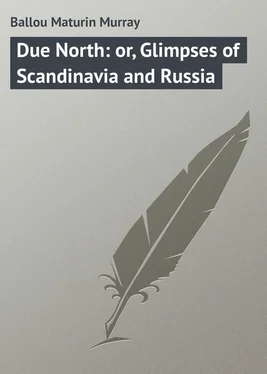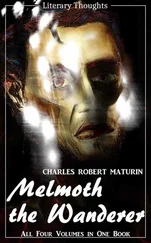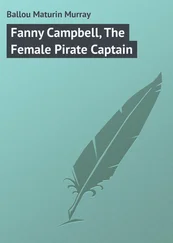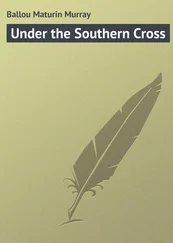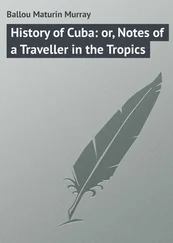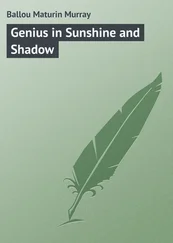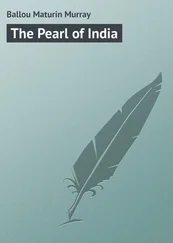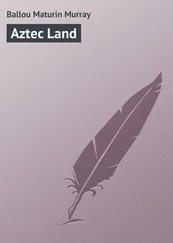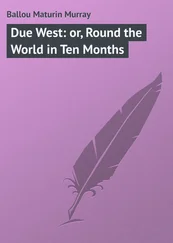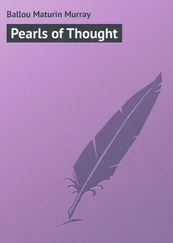Maturin Ballou - Due North - or, Glimpses of Scandinavia and Russia
Здесь есть возможность читать онлайн «Maturin Ballou - Due North - or, Glimpses of Scandinavia and Russia» — ознакомительный отрывок электронной книги совершенно бесплатно, а после прочтения отрывка купить полную версию. В некоторых случаях можно слушать аудио, скачать через торрент в формате fb2 и присутствует краткое содержание. Жанр: foreign_prose, Путешествия и география, на английском языке. Описание произведения, (предисловие) а так же отзывы посетителей доступны на портале библиотеки ЛибКат.
- Название:Due North: or, Glimpses of Scandinavia and Russia
- Автор:
- Жанр:
- Год:неизвестен
- ISBN:нет данных
- Рейтинг книги:3 / 5. Голосов: 1
-
Избранное:Добавить в избранное
- Отзывы:
-
Ваша оценка:
- 60
- 1
- 2
- 3
- 4
- 5
Due North: or, Glimpses of Scandinavia and Russia: краткое содержание, описание и аннотация
Предлагаем к чтению аннотацию, описание, краткое содержание или предисловие (зависит от того, что написал сам автор книги «Due North: or, Glimpses of Scandinavia and Russia»). Если вы не нашли необходимую информацию о книге — напишите в комментариях, мы постараемся отыскать её.
Due North: or, Glimpses of Scandinavia and Russia — читать онлайн ознакомительный отрывок
Ниже представлен текст книги, разбитый по страницам. Система сохранения места последней прочитанной страницы, позволяет с удобством читать онлайн бесплатно книгу «Due North: or, Glimpses of Scandinavia and Russia», без необходимости каждый раз заново искать на чём Вы остановились. Поставьте закладку, и сможете в любой момент перейти на страницу, на которой закончили чтение.
Интервал:
Закладка:
Upon this line of road there are occasional districts so well wooded as to be called forests; but that word does not signify the same in Zeeland as it does in America. There are still to be seen occasional groups of gypsy vagrants in the inland districts, but are rarely to be found in the cities. Not many years ago they were here in great numbers, but are now gradually disappearing. One group was observed whose members presented all the peculiar characteristics of their Asiatic origin. They are dark-skinned, with raven-black hair and black piercing eyes, presenting a picture of indolence and sensuousness. The young women were mostly handsome, even in their dirt, rags, and cheap jewelry.
The ramparts and fortifications generally which formerly surrounded Copenhagen on the seaside have nearly all been demolished, the ground being now turned into fine garden-walks planted with umbrageous trees and bright-hued flowers, adding greatly to the beauty of the Danish capital. The last unimproved portion of these now defunct fortifications is being levelled and brought into ornamental condition. The former moats have assumed the shape of tiny lakes, upon which swans are seen at all hours; and where death-dealing cannon were planted, lindens, rose-bushes, peonies, heliotrope, and tall white lilies now bloom and flourish. The outer-island defences have in the mean time been greatly strengthened and the more modern weapons of warfare adopted, so that Copenhagen is even better prepared for self-defence than ever before.
"Lord keep me innocent: make others great."
One has only to study for a moment the serene and beautiful face of the Queen, as exhibited in Rosenborg Palace, to feel entire confidence in her innocence.
If you come to Elsinore the guide will show you what is called Hamlet's grave, located in a small grove of trees, where some cunning hands long ago erected a rude mound of stones. Shakspeare, who had a royal way of committing anachronisms, made Hamlet live in this place after the introduction of gunpowder, whereas, if any such person ever did exist, it was centuries earlier and hundreds of miles farther north upon the mainland, in what is now Jutland. However, that is unimportant. Do not leave Elsinore without visiting Ophelia's fatal brook! To be sure it is not large enough for a duck to swim in, but a little stretch of the imagination will overcome all local discrepancies.
Far back in Danish legendary story, a time when history fades into fable, it is said there was a Hamlet in northern Denmark, but it was long before the birth of Christ. His father was not a king, but a famous pirate chief who governed Jutland in conjunction with his brother. Hamlet's father married the daughter of a Danish king, the issue being Hamlet. His uncle, according to the ancient story, did murder Hamlet's father and afterwards married his mother; and this was the basis of Shakspeare's grand production.
The great, gloomy-looking castle of Kronborg, which has stood sentinel here for three centuries, would require two thousand men and more to defend it in time of war, but modern gunnery has rendered it, for all offensive purposes, of no account. The Sound, which at Copenhagen is about twenty miles wide, here narrows to two, the old fort of Helsingborg on the Swedish coast being in full view. Thus the passage here forms the natural gate to the Baltic. There are delightful drives in the environs of Elsinore presenting land and sea views of exquisite loveliness, the water-side bristling with reefs, rocks, and lighthouses, while that of the land is picturesque with villas, groves, and cultivated meads.
CHAPTER III
One day's sail due north from Copenhagen through the Sound and the Cattegat – Strait of Catti – brings us to Gottenburg, the metropolis of southwestern Sweden. The Strait, which is about a hundred miles in width, is nearly twice as long, and contains many diminutive islands. Gottenburg is situated on the Götha River, about five miles from its mouth. In passing up this water-way the old fortification of Elfsborg was observed, now dismantled and deserted, though it once did good service in the war with the Danes. Cannon-balls are still to be seen half embedded in the crumbling stonewalls, – missiles which were fired from the enemy's ships. Though Gottenburg is less populous, it is commercially almost as important as Stockholm the capital, and it is appropriately called the Liverpool of Scandinavia. The town, with its eighty thousand inhabitants, has a wide-awake aspect, especially in the neighborhood of the river, where the numerous well-stocked timber-yards along the wharves show that product to be a great staple of the local trade. One is agreeably prepossessed upon landing here by a certain aspect of neatness and cleanliness observable on all sides. Indeed, few foreign towns produce so favorable a first impression. The business centre is the Gustaf-Adolf-Torg, in which is situated the Börs, or Exchange, decidedly the finest building architecturally in the city. In the centre of the Torg is a bronze statue of Gustavus Adolphus, the founder of the town, and which, as a work of art, is extremely creditable to the designer, Fogelberg. The history of the statue is somewhat curious. It seems that the first one designed for this public square was wrecked at sea while on its passage from Hamburg to Gottenburg, but was rescued by a party of sailors off Heligoland, who claimed so extraordinary a sum as salvage that the Gottenburgers refused to pay it, and ordered of the sculptor a second one to replace that which had been saved from the sea. In due time the second statue was furnished and set up in the Torg, Nov. 5, 1855, on the two hundred and twenty-third anniversary of the death of Gustavus. The extortionate seamen who held the first statue were finally glad to sell it to other parties for a comparatively small sum, representing its bare metallic value. It now stands in the Domshide of Bremen.
The deep, broad watercourse which runs through the centre of the city to the harbor is the beginning of the famous Götha Canal, which joins fjord, river, locks, and lakes together all the way to Stockholm, directly across southern Sweden, thus connecting the North Sea and the Baltic. The two cities are also joined by railroad, the distance between them being over three hundred miles. The rural parts of the country through which the canal passes are not unlike many inland sections of New England, presenting pleasant views of thrifty farms and well-cultivated lands. There are some sharp hills and abrupt valleys to be encountered, which are often characterized by grand waterfalls, wild-foaming rivers, and surging rapids.
Though there is no striking similarity between the two cities, one is yet reminded of Amsterdam by Gottenburg, aided perhaps by the memory that it was originally founded by Gustavus Adolphus, in 1619, and that Dutch settlers were among its first inhabitants. The descendants of such people are pretty sure to retain an ancestral atmosphere about them which is more or less distinctive. The place is divided into an upper and lower town, the latter being a plain cut up into canals, and the former spread picturesquely over the adjoining hills. The town is made up of two or three principal boulevards, very broad, and intersecting one another at right angles, with a canal in their centres, these waterways being embanked by substantial granite borders, which are interspersed at convenient distances with granite steps connecting the street with the water. The spacious harbor admits of vessels drawing seventeen feet of water.
Читать дальшеИнтервал:
Закладка:
Похожие книги на «Due North: or, Glimpses of Scandinavia and Russia»
Представляем Вашему вниманию похожие книги на «Due North: or, Glimpses of Scandinavia and Russia» списком для выбора. Мы отобрали схожую по названию и смыслу литературу в надежде предоставить читателям больше вариантов отыскать новые, интересные, ещё непрочитанные произведения.
Обсуждение, отзывы о книге «Due North: or, Glimpses of Scandinavia and Russia» и просто собственные мнения читателей. Оставьте ваши комментарии, напишите, что Вы думаете о произведении, его смысле или главных героях. Укажите что конкретно понравилось, а что нет, и почему Вы так считаете.
